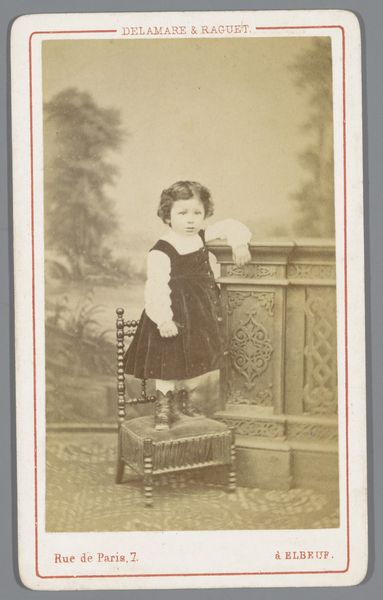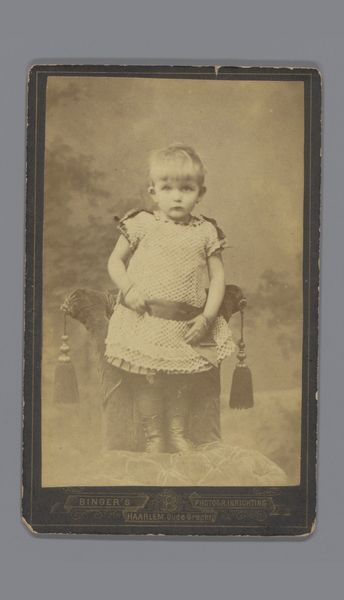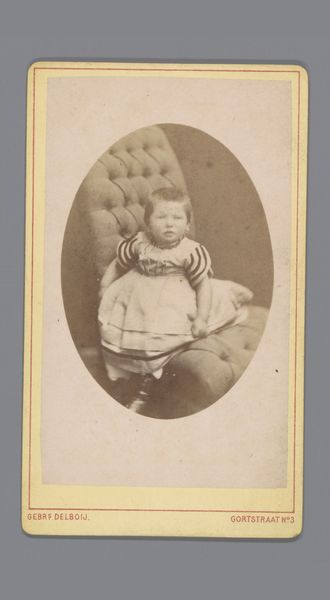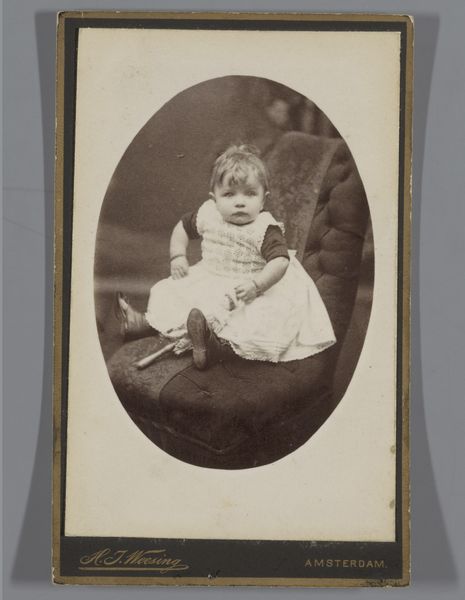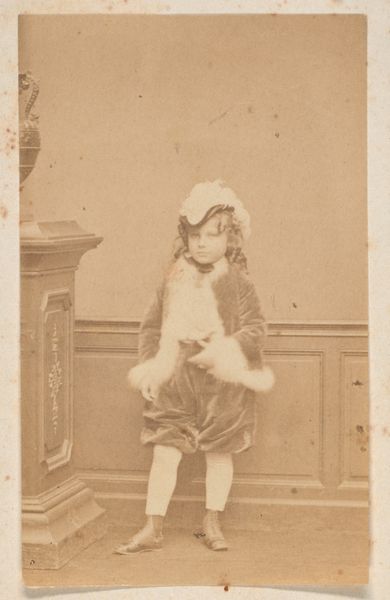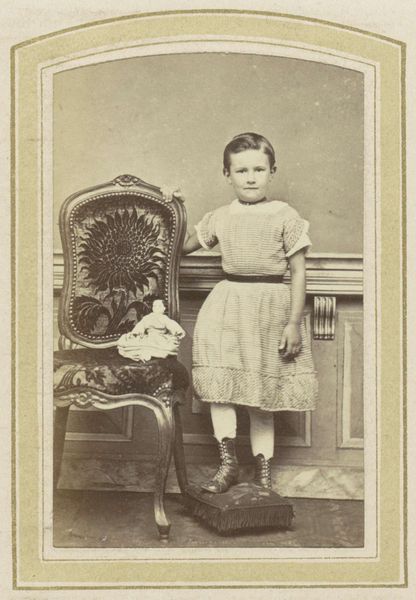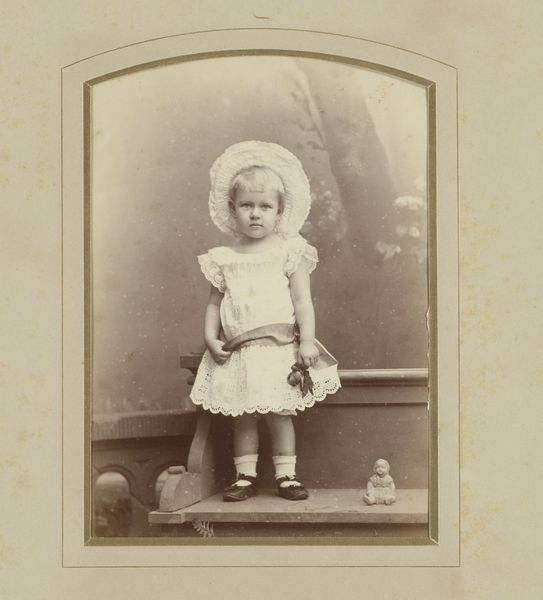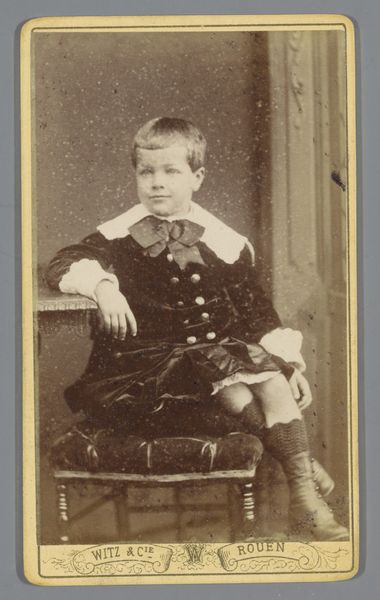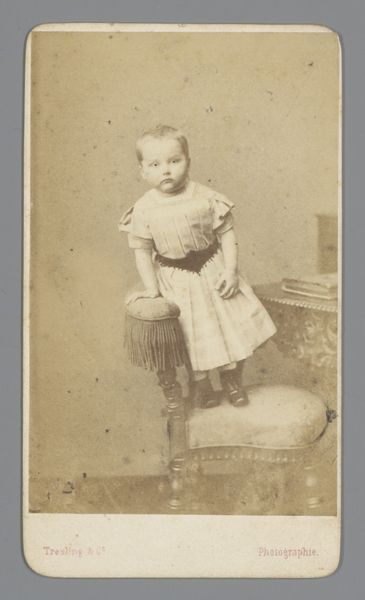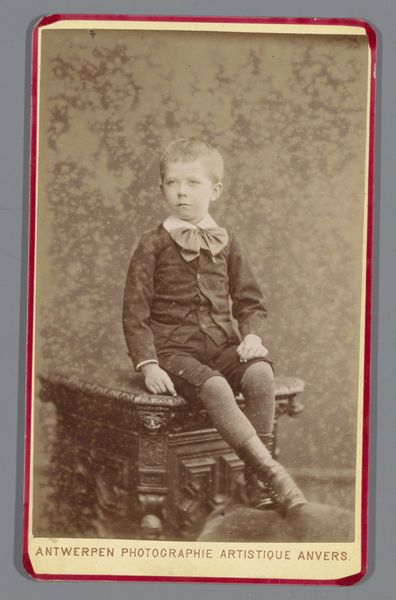
photography
#
portrait
#
photography
#
child
#
coloured pencil
#
19th century
Dimensions: height 104 mm, width 63 mm
Copyright: Rijks Museum: Open Domain
Editor: Here we have Eugène Fontaine's "Portrait of an Unknown Child by a Balustrade," a photograph dating from sometime between 1884 and 1902. The child's somber expression is striking, and I am drawn to how formally she is dressed. What strikes you when you look at this portrait? Curator: I see a carefully constructed performance of childhood. While presented as a simple portrait, it is loaded with the codes and constraints of late 19th-century bourgeois expectations. Look at the pose, the dress, the setting… Everything speaks to a societal ideal. Consider the very act of commissioning this portrait. Who was this child, and what were the socio-economic forces shaping her representation? Editor: So you're saying this is more than just a picture; it's a statement? Curator: Exactly! Photography at that time was rapidly becoming more accessible. Portraits allowed families to perform and solidify their status. This image invites us to interrogate those performances: the carefully controlled innocence, the almost theatrical costuming, the backdrop itself. We need to look critically at these representations and question whose stories were deemed worthy of preservation. How does this portrait both reflect and reinforce power structures? Editor: It makes you wonder what her life was actually like beyond this carefully crafted image. Curator: Precisely. By looking at this photograph through a contemporary lens, informed by feminist and class-conscious perspectives, we can begin to understand the complex relationship between identity, representation, and power in the late 19th century. This image can reveal much about the politics of visibility. Editor: Thank you! I'll never look at a portrait the same way again. Curator: That’s the power of art history – to make us question everything we see and think we know!
Comments
No comments
Be the first to comment and join the conversation on the ultimate creative platform.

